There are plenty of fitness trackers and Fitbits and smartwatches in the wearable technology market, and sometimes it can be difficult to choose between the brand-new version or a slightly older one.
Fitbit is one of the main purveyors in wearables and released the Fitbit Charge 5 watch in its Charge series, the first of which arrived in 2016. The fitness tech brand also has a smartwatch line where the Fitbit Sense and Fitbit Versa reside, along with fitness trackers like Fitbit Inspire, Fitbit Luxe and for children Fitbit Ace. The brand has even upped the game for 2022 by teaming up with jewellery brand Gorjana to launch the stylish Gorjana x Fitbit Luxe tracker with a gold chain bracelet style strap.
Here at What’s The Best, we put the Fitbit Charge 5 up against the Fitbit Charge 4, to see just how different they are and how you can save money if you’re looking to step into the fitness tracking trend. Deputy editor, Natalie Corner, a self-professed Fitbit fan, owns the Charge 4 and had the opportunity to test out the Charge 5. Let’s see which Fitbit fitness tracker came out on top...
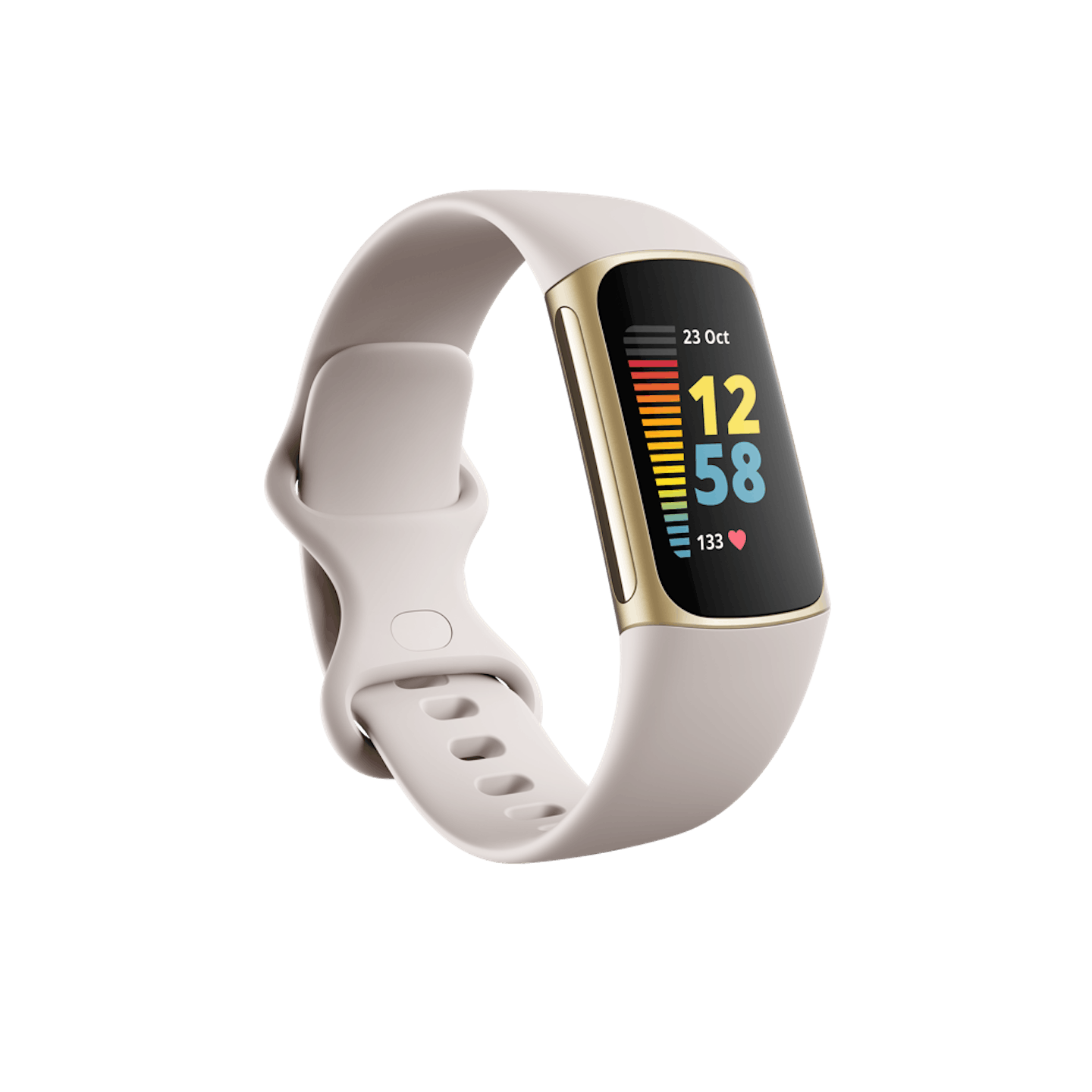
Pros
- Impressive battery life
- Bright OLED screen
- Snug watch strap
Cons
- Smaller screen
- Touch sensitivity quality
- No buttons
| Touchscreen | Yes |
| Colour display | Yes OLED |
| GPS | Yes |
| Bluetooth | Yes |
| Compatibility | Android and iOs |
| Size | Screen 26.43mm x 21.93mm x 14.75mm |
| Weight | 28g |
| Battery life | Up to 7 days |
| Material | Aluminum & silicone |
| Waterproof | Up to 50m depth |
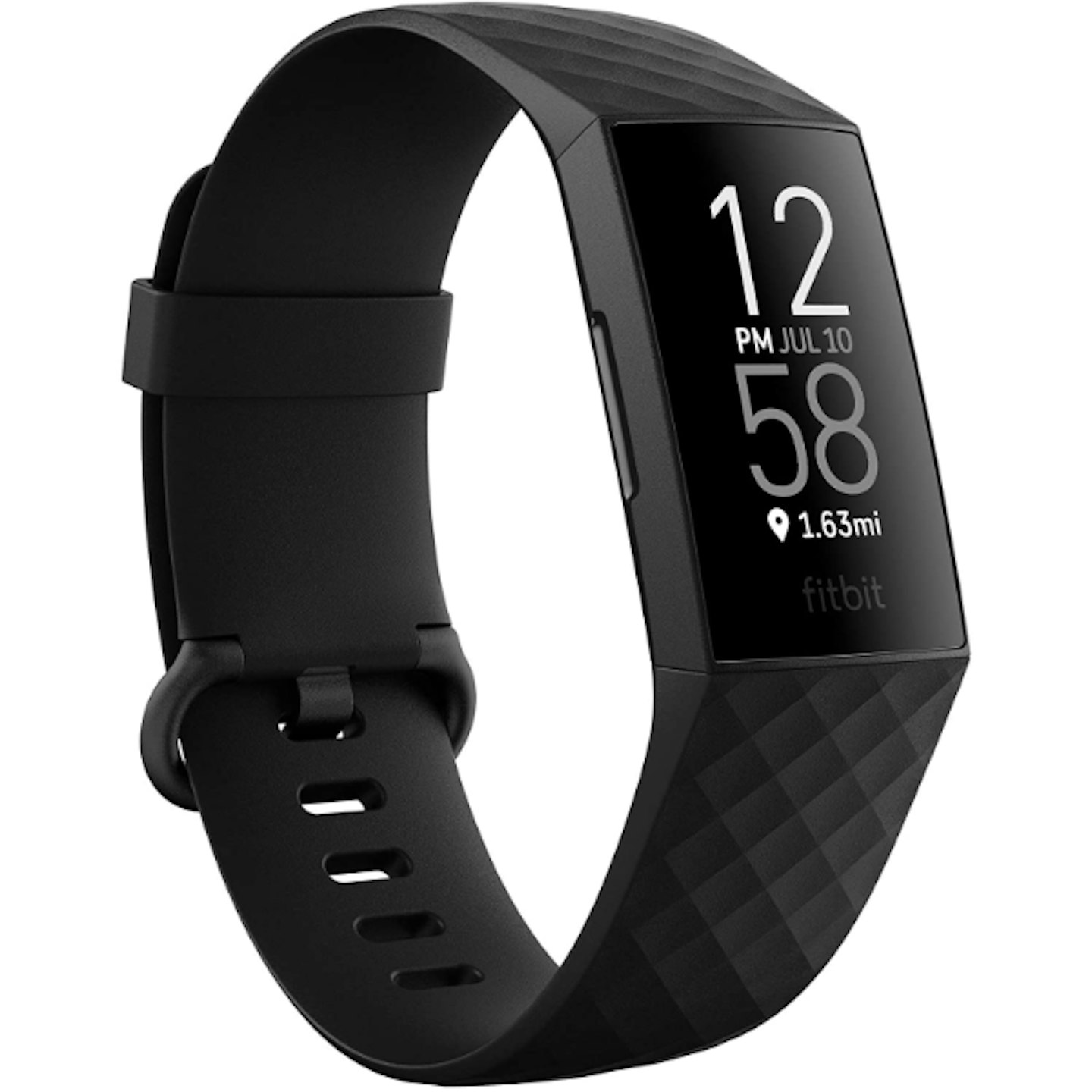
Pros
- Impressive battery life
- Responsive screen
- Buttons
Cons
- Watch strap
- Grayscale
- Style not as sleek
| Touchscreen | Yes |
| Colour display | No Greyscale |
| GPS | No |
| Bluetooth | Yes |
| Compatibility | <meta charset="utf-8">Android and iOs |
| Size | Screen 35.8mm x 22.7mm x 12.5mm |
| Weight | 27g |
| Battery life | Up to 7 days |
| Material | Aluminum & silicone |
| Waterproof | Up to 50m depth |
Build: Fitbit Charge 5 vs Fitbit Charge 4
The most noticeable difference between the Fitbit Charge 5 and Fitbit Charge 4 is the slimline design. Fitbit upgraded the Charge 5 with a bright OLED colour display that replaces the Charge 4’s grayscale screen. The rounded sleek edge of the OLED colour display makes the Fitbit Charge 5 feel more like a smartwatch than just a regular fitness tracker, but in my opinion, I didn’t have any issue with the Fitbit Charge 4 grayscale, as it was still clear when showing me my workout results, steps, and other functions like setting alarms and timers.
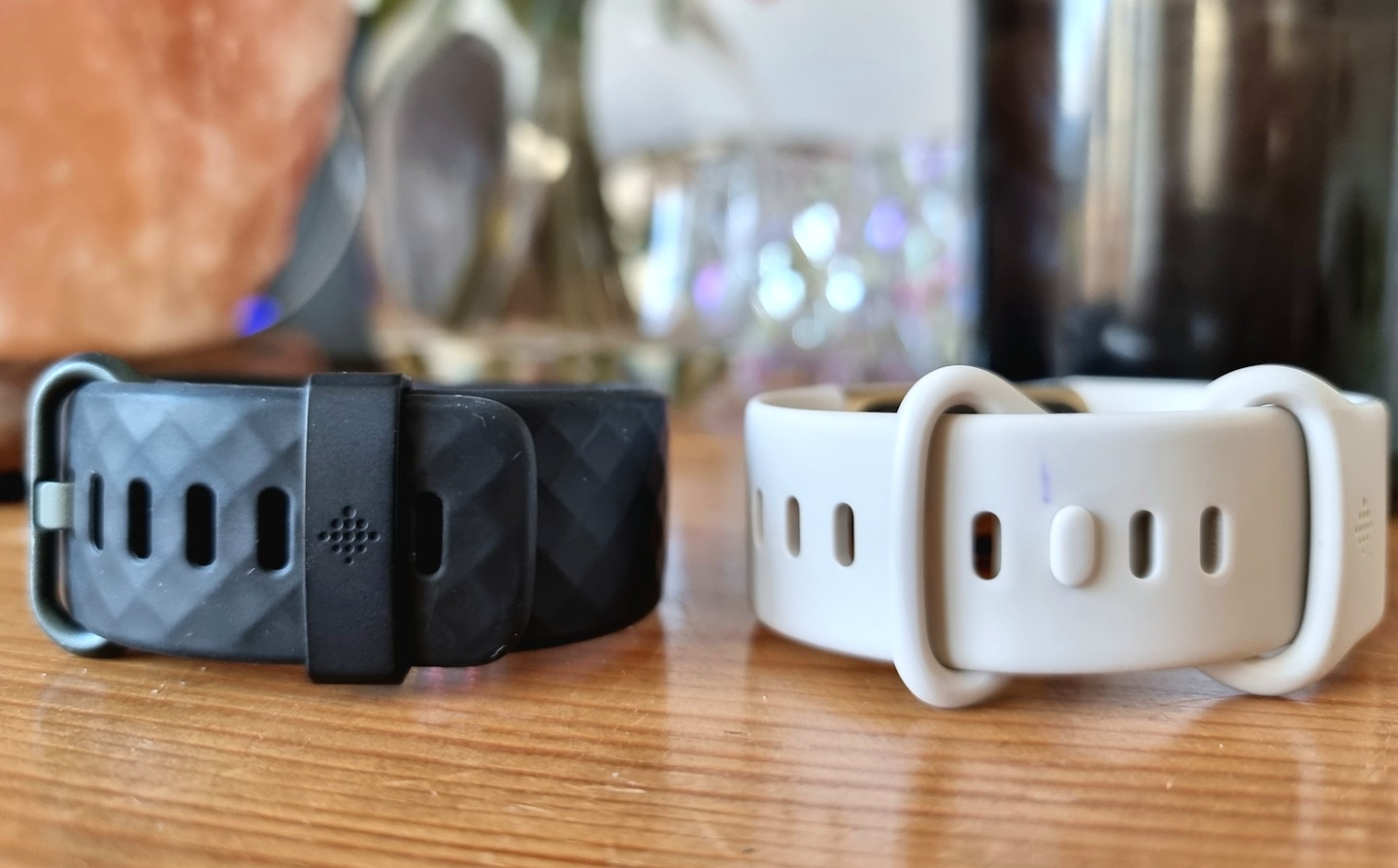
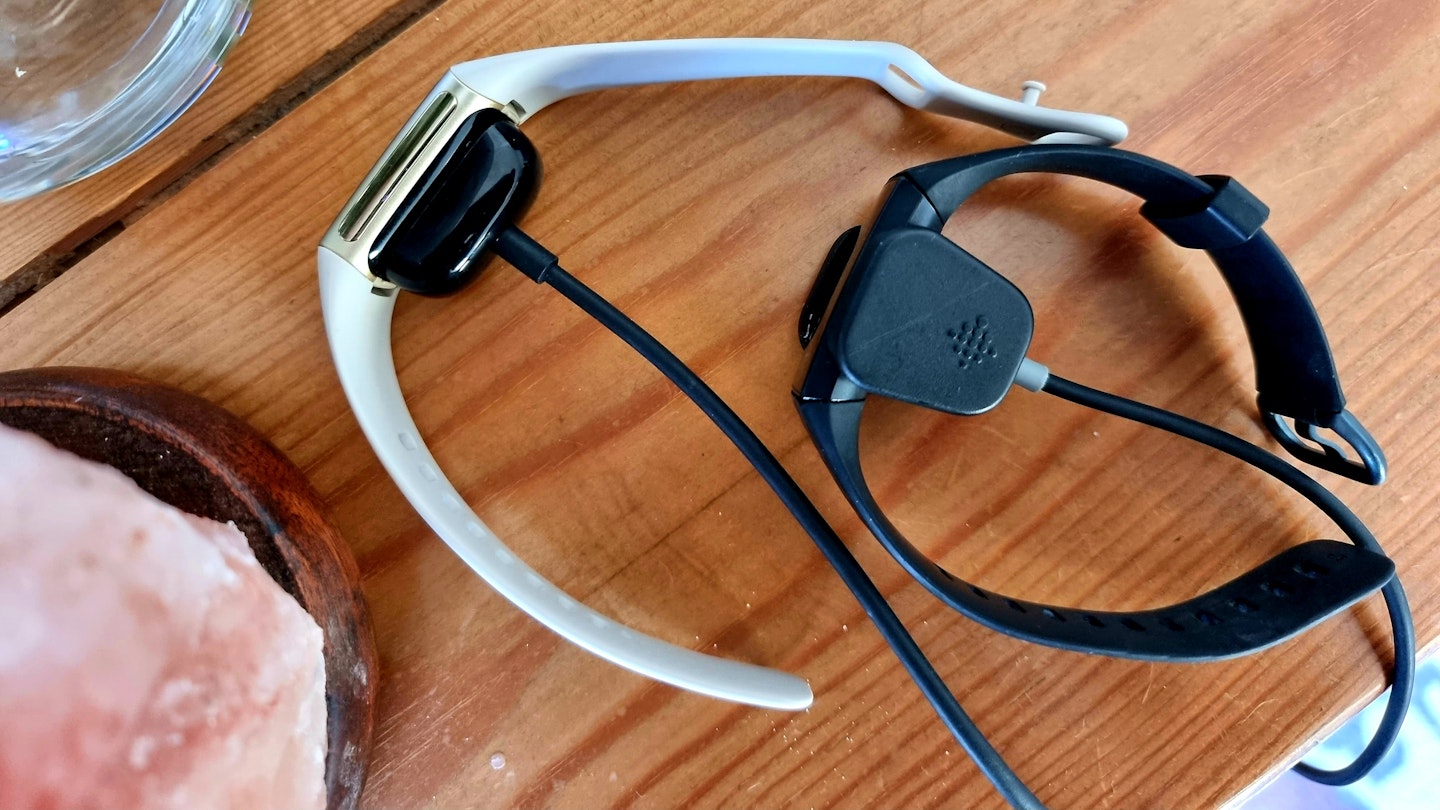
One change I was pleasantly surprised with on the Charge 5 is the updated design of the silicone strap, as well as a softer material, there is a clever “infinity” closure which is a hole for your strap to be tucked into after you’ve adjusted the size to fit, making it super sleek and snug against your wrist. The Charge 4 has a traditional watch buckle that isn’t awful but compared to the Charge 5, the leftover strap can sometimes come loose, and I prefer the newer style.
The charging plug also gets an upgrade from the clamp style on the Charge 4 to a magnetic clip. I found with a lot of use the clamp became stiff and the pins didn’t fit in as easily, the magnet charger clips into place pretty quickly and there’s no need to fiddle or come back and realise your watch wasn’t charging at all.
Usability: Fitbit Charge 5 vs Fitbit Charge 4
Switching from the Charge 4 after using it for almost a year, to the updated Charge 5, I noticed little niggles that I really missed when using the newer model.
The Charge 5 screen doesn’t seem as sensitive to touch as the Charge 4, so swiping between screens really becomes quite a chore. I often got frustrated when trying to quickly start a workout, because the screen takes so long to react. And if I swipe too far, there is no option for me to exit with a button, and I have to swipe all the way back to the beginning to get to the home screen. The Charge 4 has two buttons on the side of the watch that you can press and it gently vibrates to alert you as it flicks between menus.

I truly miss this on the Charge 5. The electrical sensors on the side of the watch are for the addition of the ECG (Electrocardiogram) and EDA (Electrodermal Activity) Scan function instead. The ECG app is to keep track of your heart health that assesses your heart for atrial fibrillation—a heart rhythm irregularity – and you can share the results with your doctor. The EDA scan detects electrodermal activity – tiny changes in your skin's sweat level which may indicate your body's response to stress.
The ECG takes 30 seconds to measure your heart rate and it tells you your rhythm, mine had a “normal sinus rhythm” but if it is irregular, it will flag and this helps you to keep track and monitor any health issues. The EDA scan takes three very long minutes of sitting and placing your index finger and thumb on the sensors to tell you of any changes in your heart rate that would be a sign of stress. My results registered 26 responses and my heart rate dropped from 79bpm to 76bpm.
Performance: Fitbit Charge 5 vs Fitbit Charge 4
Considering the lack of sensitivity, I’m in favour of the Fitbit Charge 4 over the Fitbit Charge 5, purely because I am an impatient soul and like my technology to be fast and responsive.
However, I can’t dispute the impressive new additions of the ECG and EDA features. There are also 20 different workout options you can select from during setup on the companion Fitbit app, including specific exercises like bike riding. The in-built GPS is also great for tracking walks and runs, plotting them on a map with details of split times and heart rate levels at different points.
There are plenty of features that have been kept from in the Charge 5 upgrade, however, Fitbit has dropped the option to connect your watch to the Spotify app to control music. Personally, I was never able to connect my Charge 4 to the music app so it’s not a great loss, but for those who prefer running, the loss of quick access could be a negative.
When it comes to tracking your actual workouts both watches are equal, you have the option to switch between heart rate, calories burned, heart rate zone (cardio or fat burn), time, and distance/steps depending on your workout. For a more detailed breakdown of the date, you have to refer to the Fitbit app where it will show you your average heart rate, zone minutes, energy burned and the “impact” it has on your day.


Another interesting addition to the Fitbit Premium membership (I received six months free at the time of receiving the watch but offers may vary) which coincided with the release of the Charge 5, is the daily “Readiness” score. You must wear the watch continuously for 14 days so the app can build a profile of your overall health, but it factors in activity, sleep patterns and heart rate variability to tell you the type of exercise you should do for that day.
If your readiness level is low, Fitbit will suggest focusing on active recovery exercises like yoga or walking, but if your readiness level is higher, it recognises that you are fully rested and your body isn’t suffering fatigue, so you will gain more benefit by doing a challenging workout. With Fitbit Premium, if you’re interested in finding out how well you are sleeping it will break down the data into the time spent asleep, sleep stages like REM, deep and light sleep, as well as a percentage of how restless you were. It then gives you an overall score out of 100.
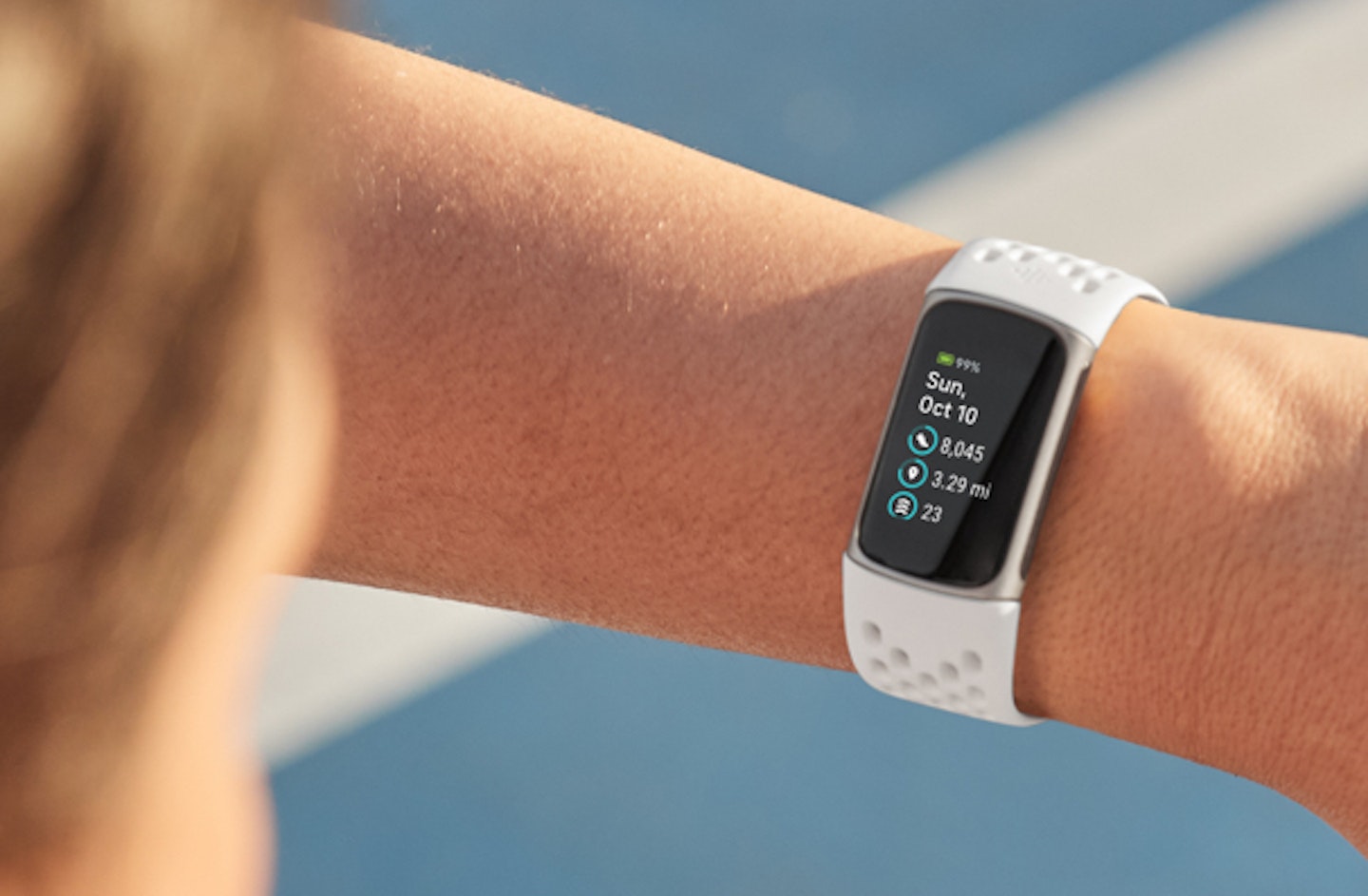
Price: Fitbit Charge 5 vs Fitbit Charge 4
The jump in price between the Fitbit Charge 4 and Fitbit Charge 5 is anything from £30-£50 depending on the retailer you purchase from. The Charge 5 comes with a six-month free trial of Fitbit Premium (usually £7.99 per month), whereas the Charge 4 is three months. You’re effectively saving almost £50 if you opt for the Charge 5, and after the trial period ends it’s your decision whether you find it worth continuing to pay for. I have used both and got along just fine without Premium, although I think when it ends, I will miss the in-depth data, £7.99 for a subscription is the same I pay for a streaming service and get so much more, so I’d rather save my money.
If you are conscious about your health and monitoring your heart rate, without question the price difference of the Charge 5 is worth it. But if you want to save money and are just looking for a simple tracker for the gym or home workouts, go for the Charge 4, you won’t miss out on the ECG or EDA scans.

Verdict: Should I buy the Fitbit Charge 5 or the Fitbit Charge 4?
It really comes down to personal preference on style and design when choosing between the Fitbit Charge 5 and the older Fitbit Charge 4 model. The Charge 5 is aesthetically more pleasing on the eye, the sleek rounded edges of the screen, with a gold, silver, or black metallic trim depending on which initial colourway you pick, the snug infinity watch strap, and the OLED colour display all are huge bonuses when investing in a fitness tracker.
When it comes to the usability of the Charge 5 and Charge 4, the Charge 4 takes the lead for me. It’s just easier and quicker. It’s simple and straightforward and for those who are just starting out on their fitness journey a solid choice if you don’t want to spend too much money. There are some great opportunities to pick up a second-hand Charge 4 where you can save even more money, especially if you are willing to buy on Facebook Marketplace or other selling platforms, people often update their tech as soon as the latest releases arrive, and previous models barely used!
Winner: Fitbit Charge 4 | Score: 5/5

Runner-Up: Fitbit Charge 5 | Score: 4/5

What to read next
Natalie Corner is the Deputy Commercial Content Editor for Bauer Media, working across brands such as What’s The Best, Yours, Mother&Baby, Grazia, Heat and Closer, specialising in lifestyle and fitness content.
Subscribe to the What’s The Best Newsletter to keep up to date with more of the latest reviews and recommendations from the rest of the What’s The Best team.
